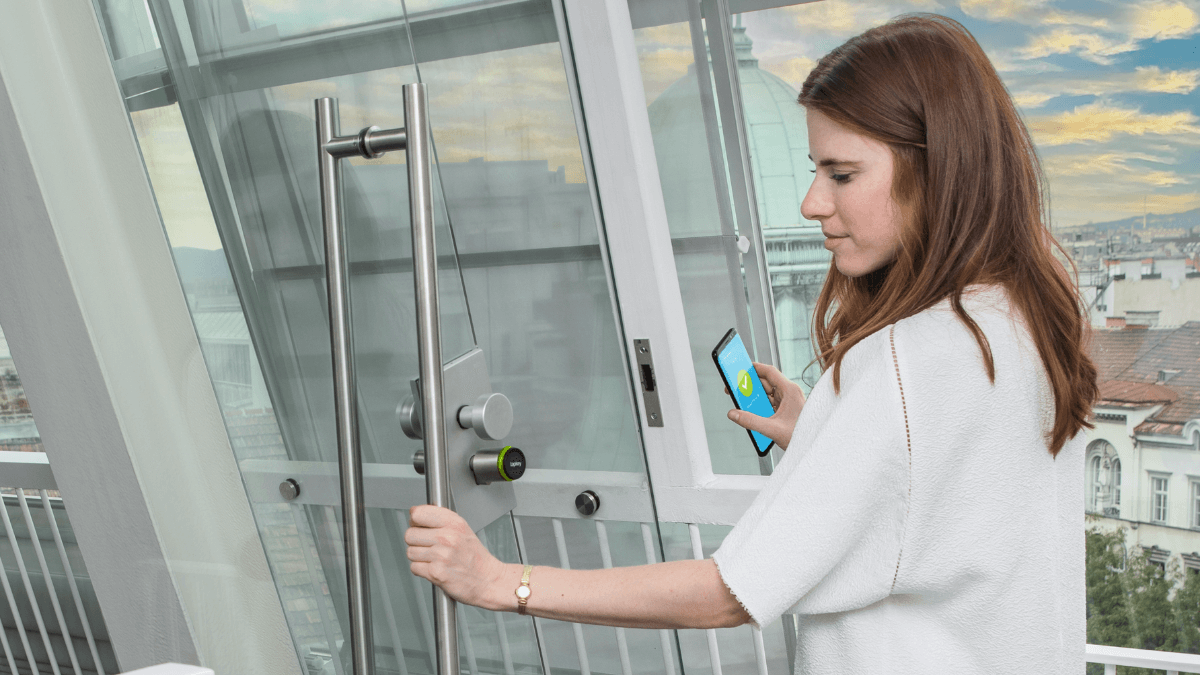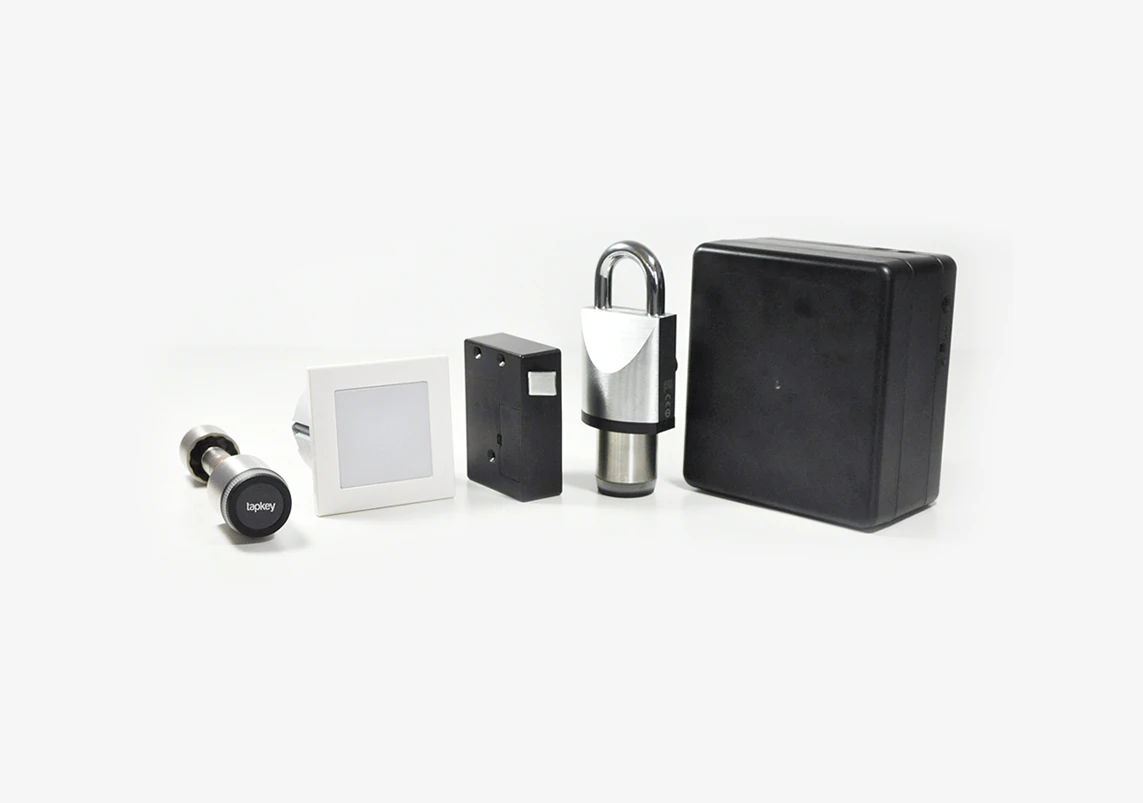Make Them Stick to Your Tenant Experience App—With Mobile Access
In an increasingly mobile world, the commercial real estate and PropTech industries are pouring time and energy into developing technology to meet tenants where they already are—on their smartphones. Tech-forward companies have already been working to engage their tenants on this frontier. Hence it’s no surprise that many PropTech solutions and tenant experience apps pop up. All of them provide a wide range of features: From paying rent, tracking package deliveries, reserving spaces and accessing various building amenities.
Though these tenant experience platforms serve many useful functions, buildings often struggle to get tenants to download the app, and struggle even more to get them to use it every day. According to comScore, the majority of smartphone users have downloaded zero apps in the last 30 days. This doesn’t mean people aren’t using mobile apps. In fact, smartphone users are, on average, spending over two hours per day on mobile apps, accounting for over half their digital media consumption. It does mean, though, that they’re concentrating more of their time on fewer apps. The key question arises: How do you motivate customers/tenants to download your app?
Smartphones as an Everyday Companion
Well, opening doors is a perfect feature for daily use. Hence, mobile access control is an amenity tenants value and use every day. It’s no secret that tenant experience platforms are partnering with security providers to let tenants use their phone to gain access to buildings and offices. In other words: Mobile access control is essential to bring in users and keep them coming back each day. While many tenants may not carry a keycard with them everywhere, most occupants have their phones on them.
Tapkey provides different integration options—including an open API and Mobile SDK— that allows property management solutions to plug Tapkey’s mobile access control solution into their platform. “By integrating mobile access control into their services, tenant experience platforms get tenants to keep and use their app on a regular basis.”, Jochen Schurich, Senior Business Developer said. There are many benefits of PropTech solutions, but by implementing the access technology these apps are adding one more benefit to the tenant’s experience: the access experience.
Automation by Integration
On the one hand, bringing new users onto the app by integrating security could help buildings engage with their occupants and improve their satisfaction. On the other hand, it helps property managers optimise certain processes and simplify their daily work life. One vertical solution that already integrated Tapkey into its app, is SKEPP, an Office as a Service provider. In addition to being able to book meeting rooms, make service requests and regulate temperature, users are now able to simply enter the building or offices with their smartphone. Wall readers or smart locks will let them use their phone’s NFC or Bluetooth signal to open doors. With the added convenience of building access, SKEPP knows that a wider audience of tenants and residents will engage with their platform and the other services the app offers.
“The implementation allows us to create a product offering which is quite unique in the market.” said Joey Veurink in our interview.
Furthermore, connecting access control to mobile devices can give property managers a better sense of where and when tenants are entering their building. Owners can also track which of their building amenities are being used and at what times, allowing them to better allocate resources and space for offices, meeting rooms and amenity space. There’s no need to fumble for keys or cards or remember codes for any doors.
Tapkey provides breakthrough convenience with mobile access, but it doesn’t stop there. We connect the world of lock manufacturers with integrators and service providers. This is particularly interesting for delivery services for example, who want to drop off packages in buildings, boxes or in the car trunk without customers being on-site. New business opportunities for all sides, right?

4 ASPECTS EVERY TENANT EXPERIENCE APP SHOULD CONSIDER
Tenants view their offices and shared workspaces as a service and expect more from their places of work than they ever did. Hence, it’s worthwhile for landlords to spend some time thinking about tenant experience. According to the tenant experience gap report by Building Engines, 80% of property teams plan to spend at least half of their time improving tenant experience in the next year. And what’s the quickest way to a tenant’s hearts? Right, through the phones in their pockets. Not surprisingly, the number of tenant experience apps is growing and growing. They have become the essential new weapon for landlords to differentiate their assets.
But not all tenant experience apps are created equally. They are providing a wide range of available features and seamless integrations of third-party platforms. We’ve had a look at some of them and summarised the features that seem to be indispensable. The outcome: Four categories in order to revolutionise the way office environments are utilised, improved and built.
1. Community Engagement
Building a solid and central community for communications is essential for a happy office and building. So never miss a beat in your building with push, text and email notifications. Most of the apps have a forum, where personal messages can be sent and received. You want to share some important information? Maybe the elevator is not working or you want to remind them of an upcoming event? Just push an instant notification to keep the occupants up-to-date. Streamline management-resident communication to a single interface.
2. Digital Services
Providing great tenant service involves more than simply completing work orders. It includes digital tenant handbooks, or resource scheduling as well. This functionality allows you to track and coordinate amenity bookings and reservations at your office or building. Especially shared workspaces appreciate this feature. It allows tenants to access real-time availability, reserve specific rooms or desks and pay on demand. Many apps also offer mobility services that include real time insights in parking availability, bicycle or car sharing. No lost sticky notes. No double booking.
Another important feature to boost the tenant experience is: online payments. Everything is done online these days. This makes paying and collecting dues quick and easy. No checks. No running around. Providing the flexibility of online payments helps property managers get more payments on-time, but also simplify a tenants life.
3. Security
Security is a growing concern today amongst communities and should be an integral part of every tenant experience app. This includes for example access control. Mobile access control simplies the access management process. Due to tenant experience apps’ integrations with access control systems, tenant can easily access buildings, rooms and areas by tapping the phone to the located access reader or unlocking it via Bluetooth. It allows landlords to authorise access grants and tenants to enter doors with just one click.
4. Maintenance
Maintain asset value! That’s why most apps give property managers the tools they need to better plan maintenance works and repairs, notifying tenants when a problem is solved. Preventative property maintenance and inspections are essential. Sounds trivial, but the maintenance aims to keep the tenants happy and also attract new tenants. Having all maintenance requests in one place, simplifies a property manager’s and tenant’s life. Stop juggling emails, texts and calls. With such features it’s easier to keep a property in safe and habitable condition.
Efficiency Never Felt So Good
With new developments in technology, property managers or landlords can connect tenants with their buildings in a way that makes their working lives more comfortable, convenient and productive. Although these platforms serve many useful functions, property managers often struggle to get tenants to download the app, and struggle even more to get them to use it every day. By partnering with a mobile access control platform, tenants have to use their phones to gain access to buildings. Integrating mobile access control into these platforms streamlines tenants’ entry into the space they want to use, and help buildings engage their occupants across multiple channels.





Influential People in Mobility
Would you like to delve deeper into the [...]
Mehr lesenDec
Tapkey at The Security Event 2023
Discover the highlights of The Security Event 2023, [...]
Mehr lesenMay
Access Control as a Service: What Does That Mean?
What is Access Control as a Service (short [...]
Mehr lesenAug
Rethinking Shared Mobility
We invited Venkatesh, Partnerships & Business Development at [...]
Mehr lesenMar